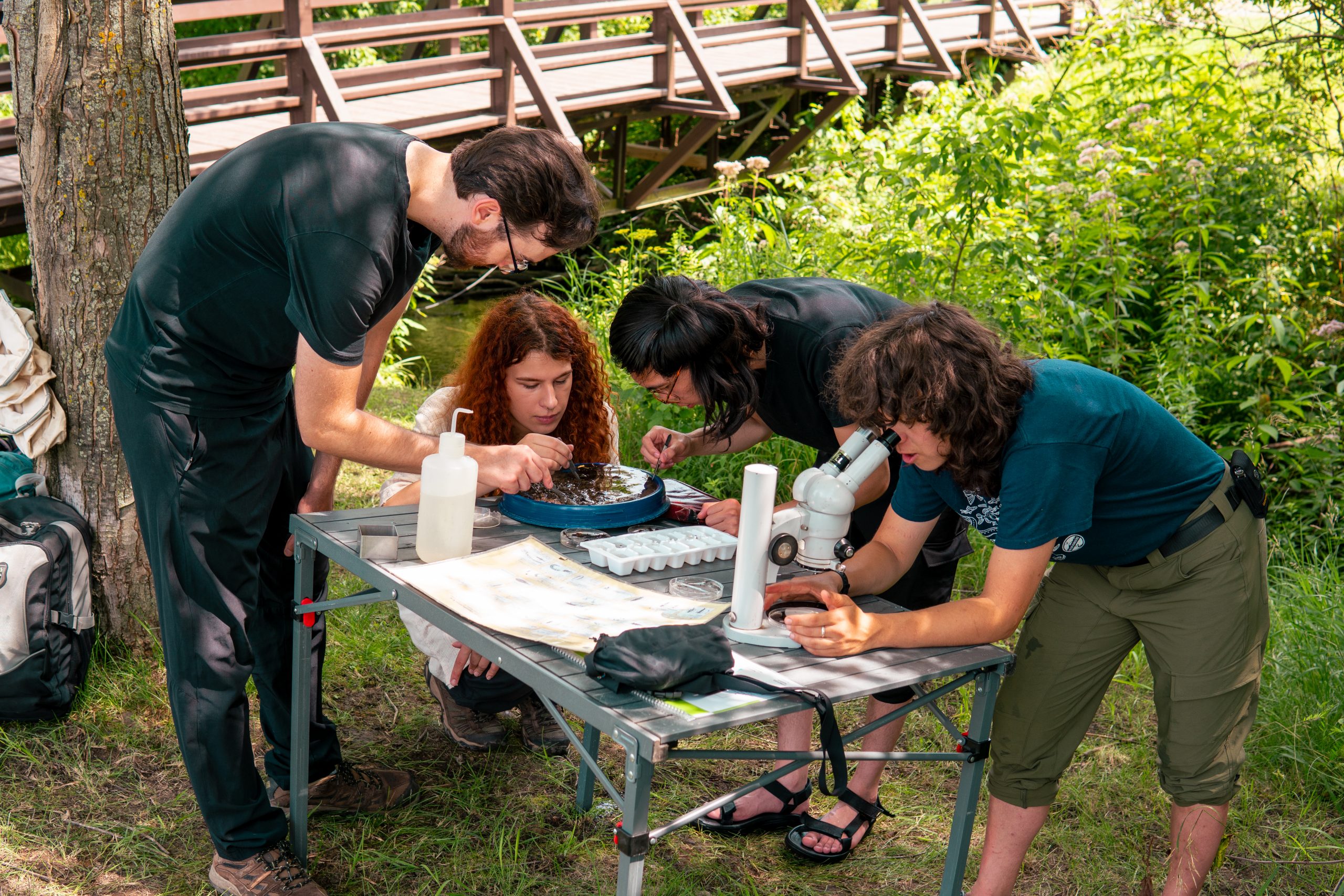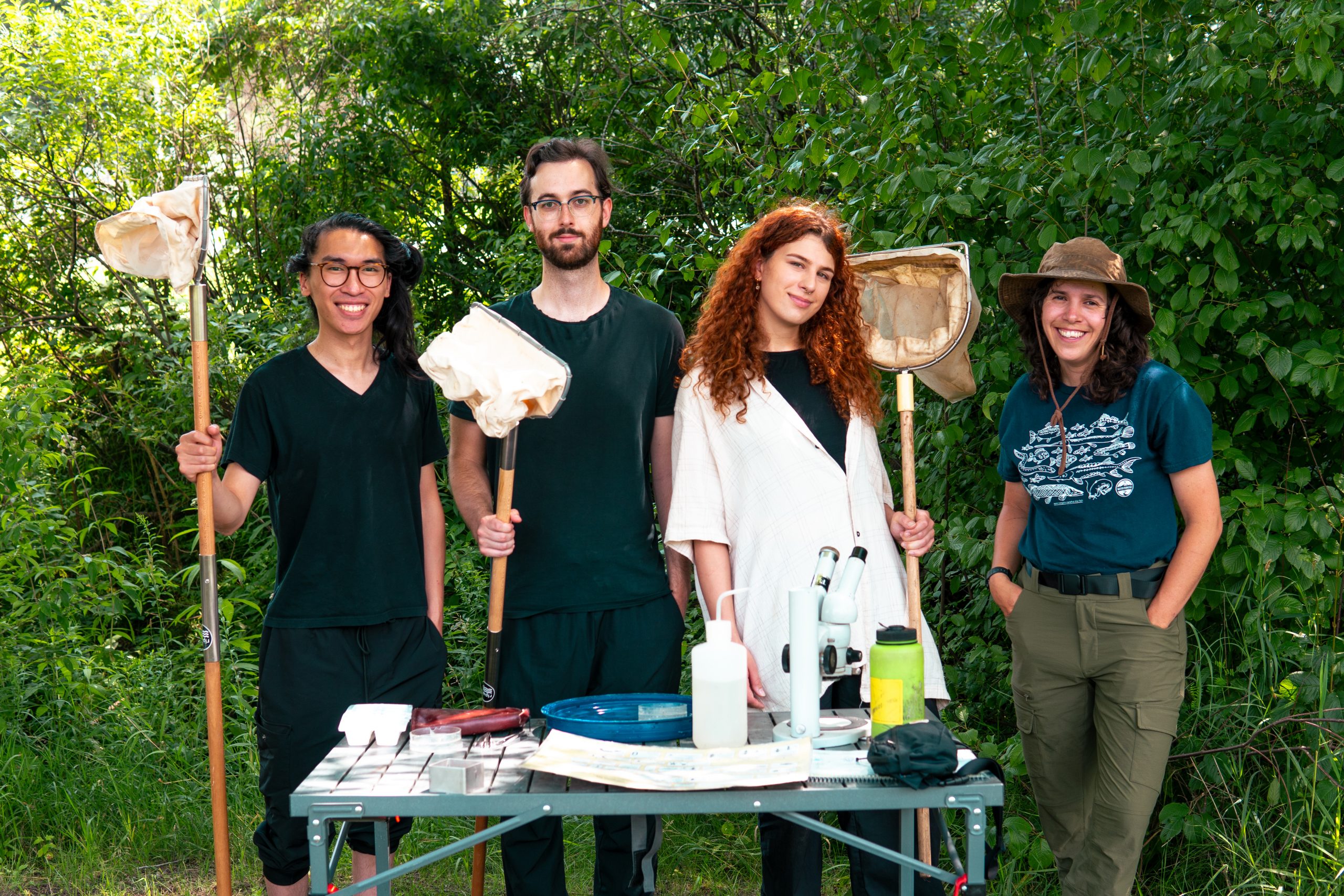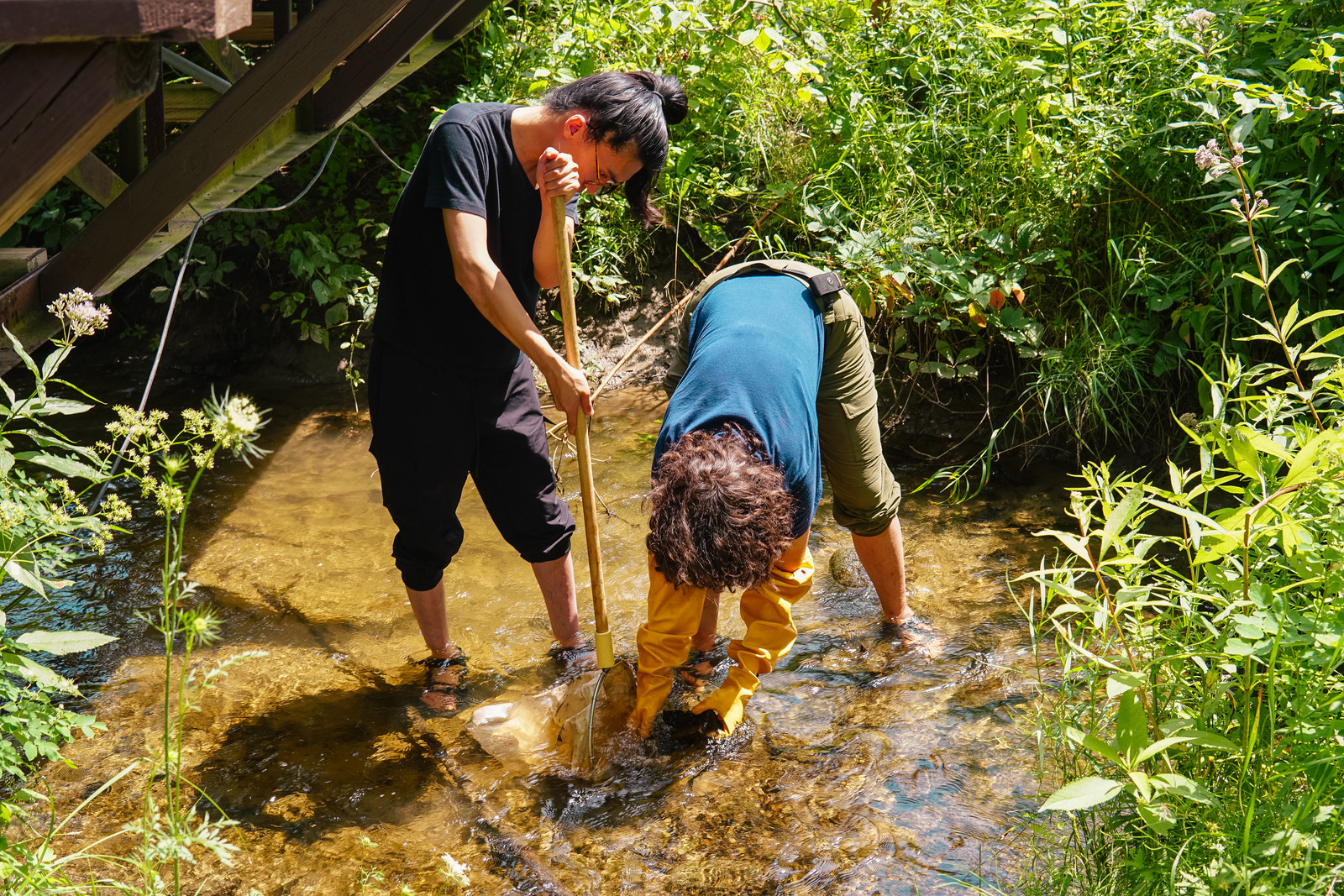Photos and video by Terence Ho
By Dan Rubinstein
On a scorching mid-July afternoon, Carleton University biology professor Dalal Hanna and master’s student Felix Chan roll up their pants and step into the shallow, clear flow of Shield’s Creek, a narrow tree-shrouded stream cutting through a park near the southern fringe of Ottawa.
Hanna reaches into the water and overturns a large rock, brushing mud of the bottom with her gloved hands. A few feet away, Chan lowers a kick net with a fine mesh into the creek, collecting some of the sediment that Hanna has released. She repeats the process, unearthing rocks, bricks and bottles from the substrate, until there’s a softball-sized clump of muck in the net.
Back on land, Chan empties the material he’s collected onto a tray atop a folding table that the research team has set up in the shade. Joined by Andrea Bresolin and Sebastian Blanchett, a master’s and PhD student respectively, he carefully roots through it with tweezers.
One by one, the students pick out insects — dragonfly larvae, isopods, caddisflies hidden inside intricate shelters constructed from sand, leaves and twigs — and place the bugs in the compartments of an ice cube tray. They take a closer look at some of the specimens under a microscope and take photographs, uploading the images to iNaturalist, an app that helps people identify animals and plants while generating data for science and conservation.
“We don’t think about places like this suburban stream as habitat,” says Hanna, an ecologist who leads Carleton’s Watershed Stewardship Research Collaborative.
“But you flip over one rock and there are hundreds of insects, and they’re the primary indicators of an ecosystem’s health.”

The students search for insects in the material collected from the creek for a closer look under the microscope
The purpose of this trip, which is less than half an hour from Carleton’s campus, is twofold. First, it’s to investigate a potential site for Hanna to bring an undergraduate field work class. But it’s also to demonstrate and train students in the methodology of her research, which is focused on investigating and mitigating the impacts of human activity on Canada’s vital yet often overlooked freshwater landscapes.
“We’re very fortunate to have an abundance of freshwater in Canada, but a lot of it is in places like this small creek that people don’t pay much attention to,” says Hanna.
“These ecosystems face numerous environmental threats. We need to get a better understanding of how they’re faring to help us make smart management decisions and foster a more sustainable future.”

The Impact of Timber Harvesting on Freshwater Ecosystems
Hanna fell in love with freshwater during summer camp canoe trips as a child. Paddling across and portaging between Quebec lakes, she was amazed by the natural grandeur less than an hour by bus from her urban home.

Dalal Hanna, Carleton University biology professor
This affinity propelled her scientific journey, which has included a post-doc at Carleton, support from the National Geographic Society’s Explorers program and a deep dive into the consequences of timber harvesting on freshwater.
Forestry is an important part of Canada’s economy, she continues, and there are approaches that minimize its negative effects on surrounding areas, such as only harvesting a certain percentage within each watershed or leaving a large enough buffer zone around rivers and lakes. That’s why her research group wants to develop a more detailed picture of the industry’s complex ecological outcomes, to help inform policy decisions.

Cross-Country Freshwater Checkup
Hanna’s StreamBlitz project will involve collecting water quality and biodiversity information from 100 streams across Canada in regions with long legacies of timber harvesting — work much like the sampling at Shield’s Creek. The project will include contributions from 10 high-school classes that will be given and trained how to use monitoring kits.
Environmental DNA sequencing will also be used to determine which species are present in a particular body of water by sending water samples to a lab for analysis. This rapidly evolving technique is fast, cost effective and can be done without removing organisms from their environment.

Left to right: Students Felix Chan, Sebastian Blanchett and Andrea Bresolin with professor Dalal Hanna at their temporary field camp in the Ottawa suburbs
The results of all this research will be shared in a story map on a new website that’s launching in September, further connecting people to the rich biodiversity in overlooked places.
Hanna is also involved in the international MacroBlitz project, a National Geographic-funded effort to inspire people to protect land, lakes and rivers by finding and photographing aquatic macroinvertebrates and uploading the images to iNaturalist.
“Historically, especially in an urban context, we’ve used freshwater as our dumping grounds,” she says. “It’s the place where we would put human waste and garbage because it was out of sight and out of mind.”
“My philosophy is that to love freshwater, you need to spend time there. Creating opportunities for students and ordinary community members to visit their local waterways is a great way to not only contribute to science but also to create connections. And those connections can inspire us to take better care of vital natural systems.”

Carleton master’s student Felix Chan and biology professor Dalal Hanna scoop up insects from Shield’s Creek
Wednesday, July 24, 2024 in Biology, Faculty of Science, Research
Share: Twitter, Facebook



